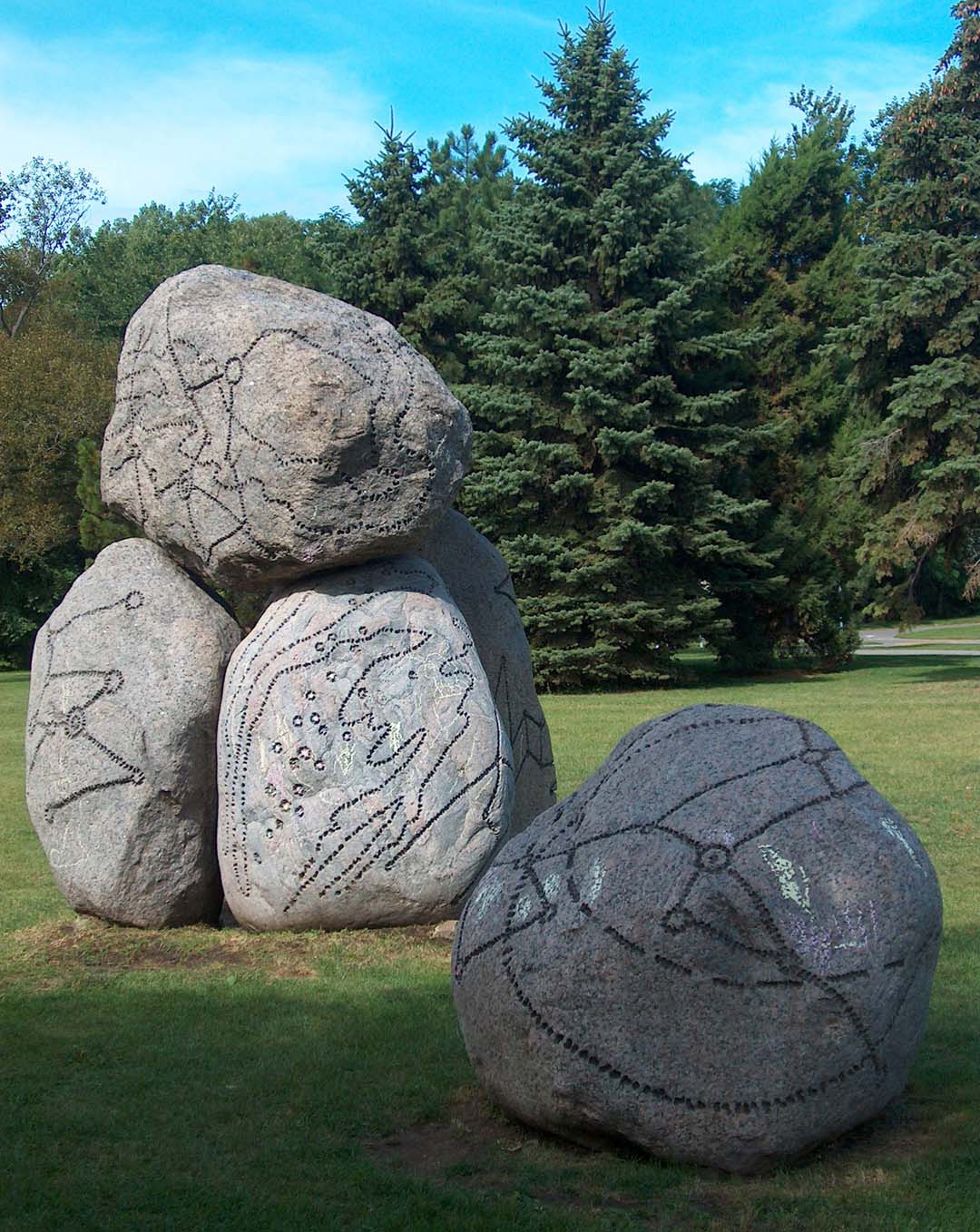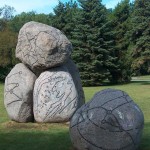

Born in Toronto, Bill Vazan is a multidisciplinary artist who has lived and worked in Montréal since 1957. He received his education at the Ontario College of Art in Toronto, the École des beaux-arts de Paris, and Sir George Williams University in Montréal.
Vazan was the first Canadian artist to devote himself to the production of land art in Canada. Many of his artworks are in Québec, including Outikan Meskina in Chicoutimi (1980) and Réduire in Mont-Tremblant (2003), and abroad, including Pierre ardente in Israel (1987) and Worldworks in Chile (2005).
Artwork description
On the bank of the canal, three vertical rocks and one horizontal rock are assembled, and a fifth rock sits close by. Small circles have been carved into the stones to form constellations of stars. The celestial chart presented on these pieces of granite reminds viewers that stars, through use of a sextant, were once important reference points for navigators, especially the first European explorers who crossed the Atlantic.
The symbolism of these motifs is exemplary of Vazan’s work. The artist, whose preferred material is stone, seeks to integrate the relationship between human beings and their world into his artworks. In Le navigateur, the chart represents the integration of people into their geographic, social, and historical territory.
The principle of integration of art with the landscape, key to the Vazan’s work, is realized here by the use of rocks whose shape is unaltered in a natural environment and by the theme of water that acts as a gateway to America, to the past, and to the cosmos.




